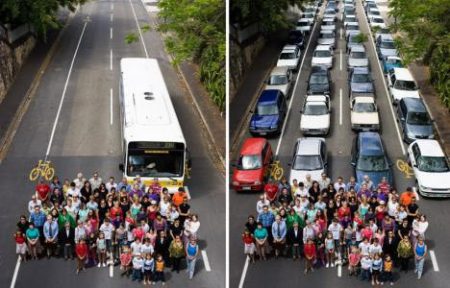Public transit ridership in the United States is higher than it’s been since 1956: 10.7 billion trips, up 1 percent from last year. While this indicates an overall trend toward transit, it’s been driven largely by high-quality transit: heavy rail like BART, commuter rail like Caltrain, and light rail like Muni Metro. Marin County’s transit picture largely echoes the national trend, though this is not a new story for our county. High-quality transit, namely trains elsewhere but ferries here, continues a ridership boom, as has commuter bus service, but local bus ridership continues to slowly slide. Overall, Marinites are taking more transit.
Local bus
Golden Gate Transit’s Marin-only service has been bleeding passengers for the past five years, from about 4.1 million to roughly 3.3 million today. Including Marin Transit’s independent operations, such as West Marin Stagecoach and school service, local ridership ticked down by 0.7 percent over last year, to 3.4 million trips.
Regional bus
Golden Gate Transit’s commuter and basic routes to San Francisco, however, are doing quite well. For the past 32 months ridership has grown and, year on year, grew by 1.3 percent over January, 2013, to about 2.5 million trips. This, however, is still down from 2004’s 3 million trips.
Ferry service
All that changes when you include the ferries. Despite a steep price hike in 2003, ferry ridership has been growing like gangbusters. Even excluding Sausalito, whose figures are skewed by tourists, Larkspur’s ridership growth has been more than enough to offset the long-term decline in regional bus ridership.
Larkspur ridership grew by 7.3 percent in the past year, from approximately 1.5 million trips last year to about 1.6 million this year. Sausalito ridership grew twice as fast, 14.9 percent, though at around 750,000 annual trips it’s still a small share of total ridership.
The rapid growth in the ferry system continues a now-32 month growth streak begun in 2011. It shot through its all-time record, set in 1978, in 2012, and shows no sign of slowing down.
What it all means
The national trend toward transit is really a national trend toward quality transit. Buses that come every hour and take 4 times as long to get around as a car just don’t cut it.
Indeed, even as MTC has focused a huge amount of attention and money on moving people faster in cars, it has spent almost no time focused on moving people faster on transit. BART is the only major investment in the past half-century that has dramatically improved mobility through the Bay Area, but has now been expanded to areas that do little to boost ridership. Other booming systems are those that feel higher-class or that run as fast or faster than driving, such as Caltrain.
In that light, it’s no surprise Marin’s high-class transit service, the ferry, is doing so well. So too is it no surprise that commuter buses, which generally offer a nicer ride than local buses, are steadily growing as well. Combined, the two systems grew by 3.5 percent this past year, quite a bit faster than Golden Gate Bridge traffic, which is up 2.4 percent.
These and national trends should guide GGBHTD and Marin Transit as they choose their capital investments. Big investments in the bus system should focus on speed, for both the locals and commuters, and comfort, for the commuters. Signal priority, for example, which allows approaching buses to turn red lights green, would help make schedules more reliable and make the bus more competitive against the car.
Small investments should focus on usability and connectivity. Open-source real-time arrival data for all buses, for example, would be a huge boon for riders, dispelling the anxiety one gets waiting for an infrequent bus to come.
For ferries, their extremely fast growth rate means capacity problems are on the horizon. GGT needs to start laying the groundwork for more crossings from Larkspur. Ongoing problems with midday ridership will continue to be a roadblock to better service as well. Even faster-growing ridership at Sausalito may require more ferries to meet the demand.
Marin's experience shows national trends are indeed applicable to our county. Investments in usability, in connectivity, and in higher-quality trips would capitalize on overall demand for transbay travel, while investments in frequency and speed could stop the slide of local service. Transit planners here would do well to learn from the successes of others.
